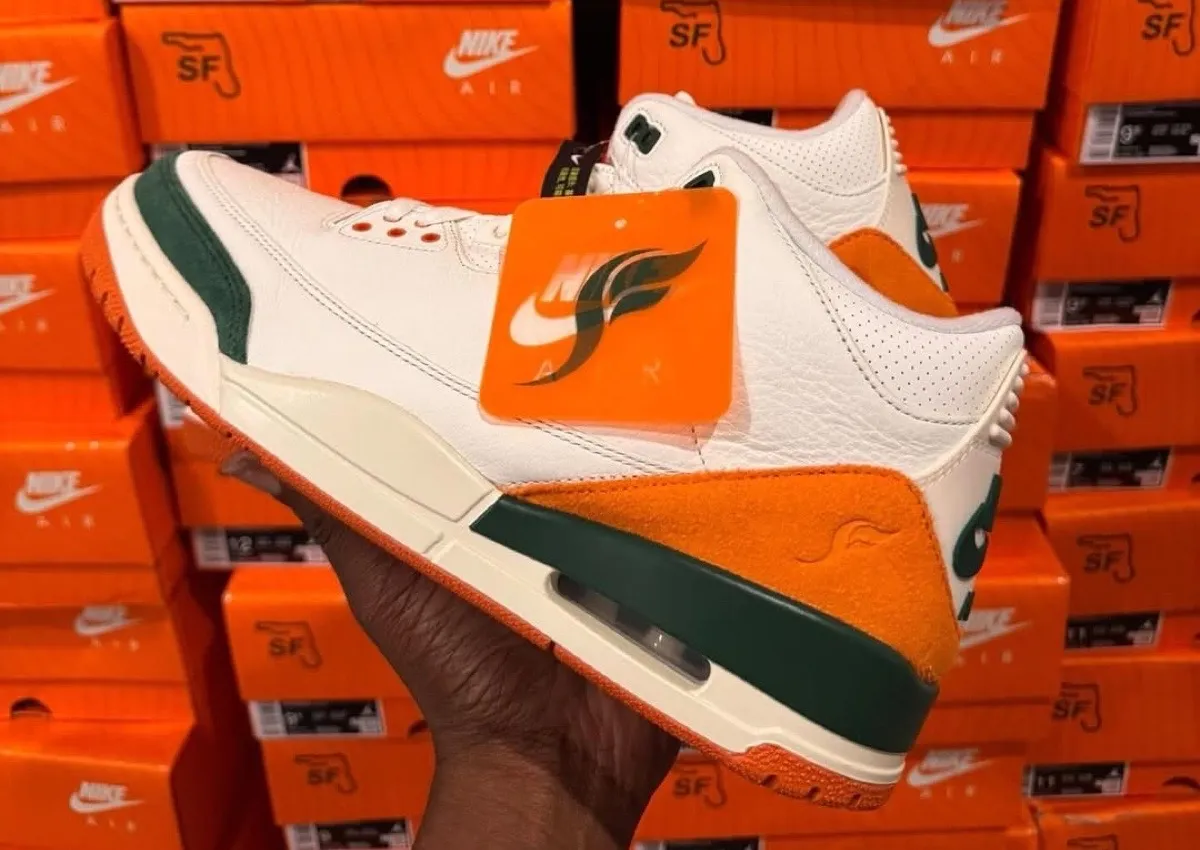Nike's Powered Running Shoes: Gimmick or Revolutionary?
Nike became a global sportswear empire thanks to its commitment to two key things: athletes and innovation. The brand recentered its approach last year to emphasize these core elements of its business in the wake of leadership changes. Following years of incremental product updates and heightened competition from nimble upstarts, Nike's renewed focus on deep innovation signals a return to the risk-taking spirit that first built its empire. Last week, just over a year after this shift, a special announcement was made, introducing NIKE, Inc. Sport Offense.The new platform combines Nike, Jordan Brand, and Converse's innovation, design, and product teams. By consolidating its performance R&D under one roof, Sport Offense eliminates brand silos and allows for faster prototyping, shared technologies, and broader creative risk-taking across Nike's ecosystem. In addition to unveiling NIKE, Inc. Sport Offense, the Swoosh revealed the division's first four pillars of innovation.Of the breakthroughs, Project Amplify is the most ambitious. Designed as the world's first powered footwear system for running and walking, Nike has taken a bold step forward. Rather than chasing elite performance metrics, Project Amplify explores how robotics can extend human endurance — not to win races, but to reimagine what everyday motion feels like and accomplishes.When contemplating whether an innovation is a gimmick or revolutionary, the bottom line is practicality. We've seen the Swoosh embark on journeys similar to Project Amplify in the past, with projects like the Adapt line and last year's Hyperice recovery shoes integrating electronics into shoes. While it is too soon to proclaim the impact of the latter, the retirement of the Adapt line speaks volumes to its effectiveness.Upon my first glance at Project Amplify, the initial question that came to mind was, "Why?" The press release notes that electric bikes have revolutionized commuting by significantly reducing the effort required to get around. Based on internal testing, the system can also help runners go from a 12-minute mile to a 10-minute mile. However, there's an asterisk attached to that accomplishment that athletes aren't going to overlook, making the technology a fun augment but not one that binds them to the grind of being a runner.To investigate its potential, we partnered with Nike to test the technology. A detachable electronic system combines with carbon fiber–plated running shoes. Slipping on the shoe, it felt as comfortable as any other Nike running shoe. Then, the product team demonstrated the ease of snapping the electronic support system on, clipping the heel to the magnetic harness, securing the orange tab to the shin, and powering the device on.Once geared up, my teammate compared it to feeling like Iron Man. It was then time to pair it with the AMP App, which calibrated the fit and self-adjusted to ensure proper support. After building familiarity with the technology by walking, running was when the real amplification began.Project Amplify is still in its testing stage, however, its ability to augment movement is already impressive. The sensation is comparable to standing on someone's hands to get a boost as a force pushes your heel forward. The prototype made one tester feel he could keep up with his marathon-running friends and pinpointed hilly terrain as an ideal use case. While this experiment offered a promising exploration of the technology's capabilities, it raised more questions than it answered, an inevitability at this stage of development.What Nike doesn't discuss in detail is how Project Amplify could make movement more accessible. Whether it be aiding in the rehabilitation of an injury or providing mobility support for people with physical disabilities, its potential is clear. Previous breakthroughs, such as the FlyEase line — easy-to-use footwear designs, including hands-free entry systems — have made a significant impact and could pair with a future form of Project Amplify for even greater support.Is Project Amplify a gimmick today? Sure, but any innovation in its infancy is destined for such a designation. This curiosity is crucial for making revolutionary breakthroughs, and there is a world in which this is the genesis of meaningful change to the footwear industry. Whether that shift is a video game-esque leveling up of one's ability to dash around a city, an introduction of a new generation of accessible footwear, or something else entirely new, remains to be determined. Regardless of its destiny, this daring pursuit of the unknown is encouraging to see. View this post on Instagram A post shared by HYPEBEAST (@hypebeast)Click here to view full gallery at Hypebeast


Nike became a global sportswear empire thanks to its commitment to two key things: athletes and innovation. The brand recentered its approach last year to emphasize these core elements of its business in the wake of leadership changes. Following years of incremental product updates and heightened competition from nimble upstarts, Nike's renewed focus on deep innovation signals a return to the risk-taking spirit that first built its empire. Last week, just over a year after this shift, a special announcement was made, introducing NIKE, Inc. Sport Offense.
The new platform combines Nike, Jordan Brand, and Converse's innovation, design, and product teams. By consolidating its performance R&D under one roof, Sport Offense eliminates brand silos and allows for faster prototyping, shared technologies, and broader creative risk-taking across Nike's ecosystem. In addition to unveiling NIKE, Inc. Sport Offense, the Swoosh revealed the division's first four pillars of innovation.
Of the breakthroughs, Project Amplify is the most ambitious. Designed as the world's first powered footwear system for running and walking, Nike has taken a bold step forward. Rather than chasing elite performance metrics, Project Amplify explores how robotics can extend human endurance — not to win races, but to reimagine what everyday motion feels like and accomplishes.
When contemplating whether an innovation is a gimmick or revolutionary, the bottom line is practicality. We've seen the Swoosh embark on journeys similar to Project Amplify in the past, with projects like the Adapt line and last year's Hyperice recovery shoes integrating electronics into shoes. While it is too soon to proclaim the impact of the latter, the retirement of the Adapt line speaks volumes to its effectiveness.






Upon my first glance at Project Amplify, the initial question that came to mind was, "Why?" The press release notes that electric bikes have revolutionized commuting by significantly reducing the effort required to get around. Based on internal testing, the system can also help runners go from a 12-minute mile to a 10-minute mile. However, there's an asterisk attached to that accomplishment that athletes aren't going to overlook, making the technology a fun augment but not one that binds them to the grind of being a runner.
To investigate its potential, we partnered with Nike to test the technology. A detachable electronic system combines with carbon fiber–plated running shoes. Slipping on the shoe, it felt as comfortable as any other Nike running shoe. Then, the product team demonstrated the ease of snapping the electronic support system on, clipping the heel to the magnetic harness, securing the orange tab to the shin, and powering the device on.
Once geared up, my teammate compared it to feeling like Iron Man. It was then time to pair it with the AMP App, which calibrated the fit and self-adjusted to ensure proper support. After building familiarity with the technology by walking, running was when the real amplification began.





Project Amplify is still in its testing stage, however, its ability to augment movement is already impressive. The sensation is comparable to standing on someone's hands to get a boost as a force pushes your heel forward. The prototype made one tester feel he could keep up with his marathon-running friends and pinpointed hilly terrain as an ideal use case. While this experiment offered a promising exploration of the technology's capabilities, it raised more questions than it answered, an inevitability at this stage of development.
What Nike doesn't discuss in detail is how Project Amplify could make movement more accessible. Whether it be aiding in the rehabilitation of an injury or providing mobility support for people with physical disabilities, its potential is clear. Previous breakthroughs, such as the FlyEase line — easy-to-use footwear designs, including hands-free entry systems — have made a significant impact and could pair with a future form of Project Amplify for even greater support.
Is Project Amplify a gimmick today? Sure, but any innovation in its infancy is destined for such a designation. This curiosity is crucial for making revolutionary breakthroughs, and there is a world in which this is the genesis of meaningful change to the footwear industry. Whether that shift is a video game-esque leveling up of one's ability to dash around a city, an introduction of a new generation of accessible footwear, or something else entirely new, remains to be determined. Regardless of its destiny, this daring pursuit of the unknown is encouraging to see.






















